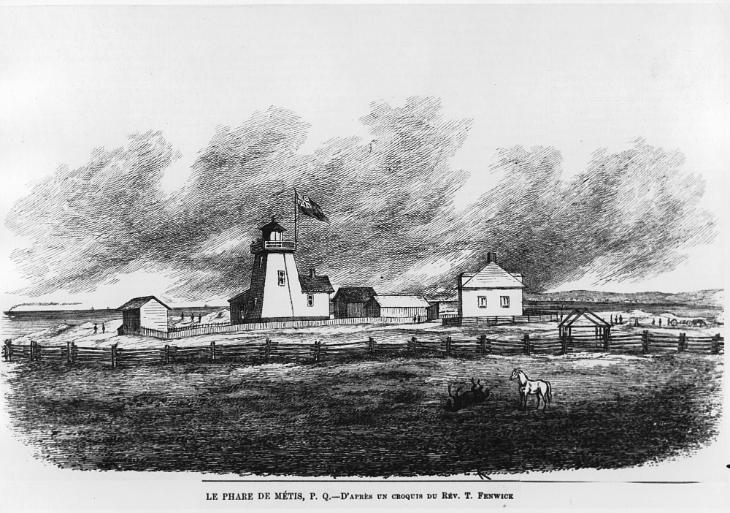The First Metis Lighthouse – A Response to Multiple Sinkings and Tragedies

Photolithograph
Lighthouse, Metis, about 1875
Reverend Thomas Fenwick
McCord Museum Stewart
Surveyor Joseph Bouchette was the first to identify Metis as the ideal location for a lighthouse in his 1815 Topographic Dictionary of Lower Canada. After countless accidents and shipwrecks, shippers, ship captains and local leaders began to assemble support to convince the authorities to build a lighthouse.
In 1870, seigneur David Ferguson and other citizens of Little Metis petitioned the government. Inventorying the numbers of shipwrecks, drowned sailors, lost cargoes and near misses, the petitioners described the need for a lighthouse as urgent. Until one was erected, they suggested that a “yellow light be placed on a suitable scaffold, and a signal gun fired during foggy weather or in answer to signals from steamships”.
The call for action was finally answered with the erection of a lighthouse. It was completed in October 1874 at a cost of $3,518, $1,425 of which was for the lighting and accessories. Built of wood, it stood 40 feet high. The lighthouse changed little in appearance over the next three decades. The 1906 edition of The St. Lawrence Pilot described it for passing mariners:
A square lighthouse, 40 feet high, and painted entirely bright red, on Metis point, exhibits, at 56 feet above high water, an alternating light showing red and white alternately every minute, which should be seen from a distance of 13 miles in clear weather. The keeper’s dwelling is attached to the lighthouse…there is a telegraph and sign station at this lighthouse.
The first lighthouse keeper was Jules Martin who was also its longest serving. His record of service earned him a CMG (Companion of the Order of St. Michael and St. George) medal from King Edward VII in 1907.

